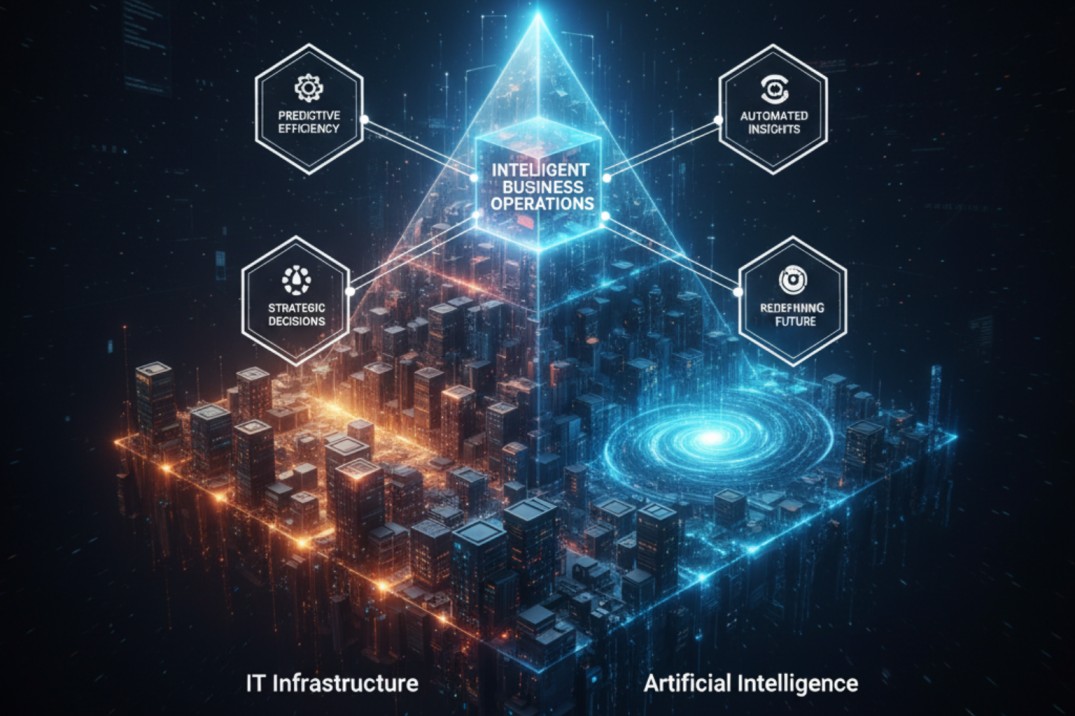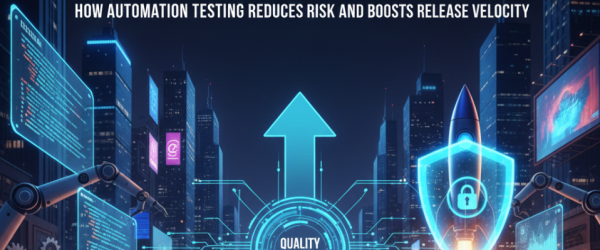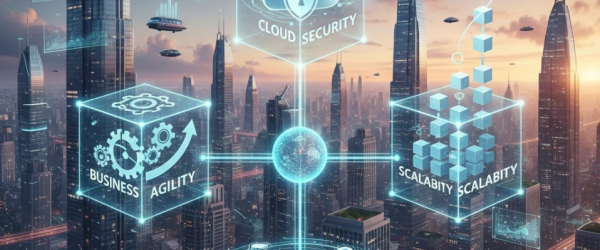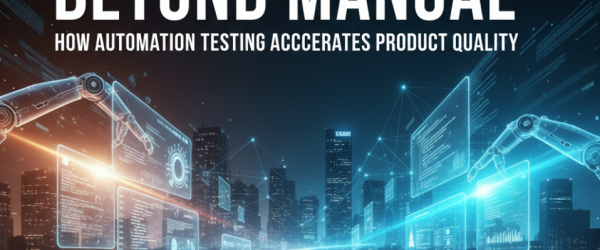Introdution
In today’s technology-driven era, the convergence of Artificial Intelligence (AI) and Information Technology (IT) is reshaping how organizations operate, compete, and create value. According to McKinsey’s State of AI report, 78 percent of organizations now use AI in at least one business function, up from 55 percent just a year earlier. This trend extends deeply into IT, where AI is no longer peripheral—it’s becoming foundational.
When AI meets IT, you get intelligent business operations—self-optimizing systems, proactive risk mitigation, and seamless alignment between tech and business goals. In this blog, we explore how this transformation unfolds, the benefits, challenges, and how your organization can lead the change.
What Does “AI Meets IT” Mean?
Putting AI into IT isn’t about sprinkling machine learning models on existing processes. It’s about rearchitecting operations so that intelligence is baked in. Key aspects include:
- AIOps (AI for IT Operations): Using ML, anomaly detection, and event correlation to automate root cause analysis and remediation.
- Agentic AI & Autonomous Agents: AI agents that execute workflows, make decisions, and dynamically coordinate tasks. IBM research reveals that 86 percent of executives believe AI agents will make process automation more effective by 2027.
- Intelligent Business Operations (IBO): End-to-end alignment of strategy, operations, and IT using AI as an enabler. Deloitte emphasizes the move from operational efficiency to transformation in intelligent business operations.
In short: AI + IT = systems that anticipate, adapt, and optimize themselves in alignment with business goals.
Why It Matters: The Business Imperative
| Trend / Stat | Implication for IT & Business |
| Global AIOps market was USD 1.87 billion in 2024 and projected to grow to USD 2.23 billion in 2025 | IT organizations increasing investment in intelligent operations |
| 48 percent of businesses say they use some AI to derive insight from big data | AI is now mainstream rather than experimental |
| 40 percent of organizations expect positive ROI from AI within 1–3 years | AI projects must be built with measurable business impact |
| Nearly 80 percent of organizations believe 50-90 percent of their data is unstructured | Handling unstructured data is a key challenge—and an opportunity |
| Trend / Stat | Implication for IT & Business |
| IT organizations are increasing investment in intelligent operations | IT organizations increasing investment in intelligent operations |
| 48 percent of businesses say they use some AI to derive insight from big data | AI is now mainstream rather than experimental |
| 40 percent of organizations expect positive ROI from AI within 1–3 years | AI projects must be built with measurable business impact |
| Nearly 80 percent of organizations believe 50-90 percent of their data is unstructured | Handling unstructured data is a key challenge—and an opportunity |
How AI + IT Transform Operations
1. Autonomous Incident Management
AI systems detect anomalous behavior—such as sudden spikes in latency or error rates—correlate across logs, metrics, and traces, and trigger automated remediation (e.g., restarting services or reallocating resources). This reduces Mean Time to Repair (MTTR) significantly.
2. Predictive Maintenance & Capacity Forecasting
By analyzing historical usage and performance trends, AI can forecast capacity requirements or equipment failures before they become problems. IT leaders can plan upgrades, scale ahead of demand, and avoid downtime.
3. AI Agents for Routine IT Tasks
Routine tasks like patching, compliance checks, or infrastructure configuration can be handled by AI agents—freeing human engineers for more strategic work. Over time, these agents learn from outcomes and optimize themselves.
4. Change Risk Analysis
Before deploying updates, AI can simulate and predict change risk—estimating the probability of failures, impact scope, and intervention strategies.
5. Intelligent IT Helpdesks
Using natural language processing and AI, IT support becomes more conversational and context-aware. AI can triage tickets, suggest solutions, escalate appropriately, and even guide employees step-by-step.
Designing Intelligent Business Operations: Key Principles
- Data-first Strategy
You must have clean, integrated data pipelines. AI’s insights are only as good as your data. - Start with Small Wins
Begin automation in high-impact, low-risk areas (e.g. alert triage) and expand gradually. - Human-in-the-Loop for Oversight
Even autonomous systems should allow manual intervention in critical paths. - Explainability & Trust
Make AI decisions transparent so stakeholders trust outcomes. - Feedback Loops & Continuous Learning
Monitor outcomes and feed them back to models for refinement. - Cross-Functional Collaboration
Blend IT, operations, and business teams—don’t silo intelligence in engineering alone.
Challenges to Overcome
- Model Drift & False Positives: AI models degrade over time unless retrained.
- Talent Gaps: Skilled AI/ML and DevOps professionals are in demand.
- Integration Complexity: Legacy systems, multiple platforms, and silos can hamper adoption.
- Governance, Security & Compliance: AI must operate within strict compliance guardrails.
Conclusion
Where AI meets IT, the future of business operations is being redefined. It’s no longer about handling incidents faster—it’s about anticipating change, optimizing continuously, and aligning every tech decision with business impact.
To thrive in this future, organizations must plan, build, and invest in systems that are intelligent, autonomous, and human-aligned.







